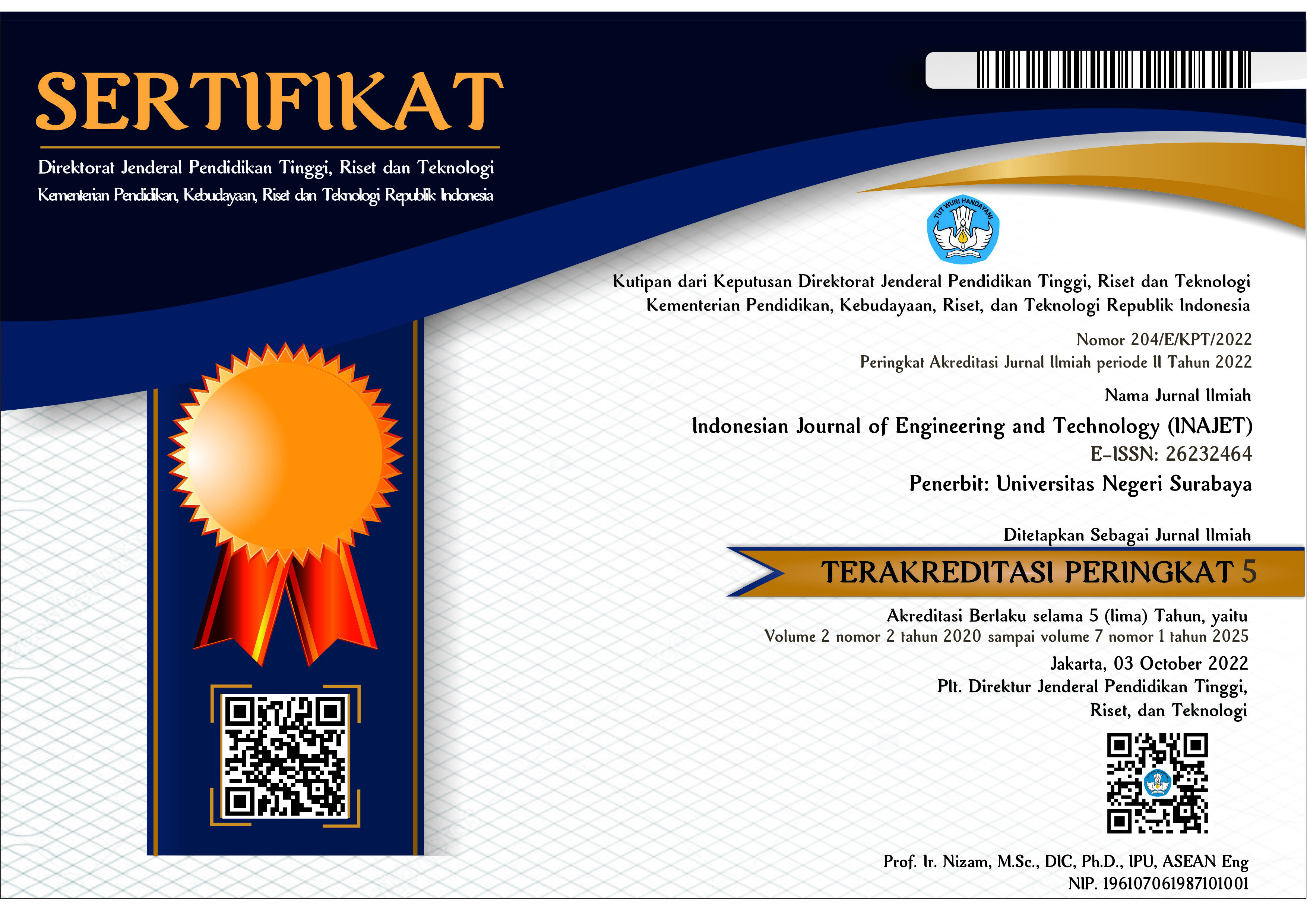Comparative Study of Structural Strength in the Selection of VU-EV Car Chassis Materials (Vokasi Unesa-Electrical Vehicle) Using Solidworks 2020 Software
DOI:
https://doi.org/10.26740/inajet.v7n2.p51-55Abstract
The development of electric cars in recent years has changed very rapidly. The Vocational Faculty of Surabaya State University also wants to develop an electric car in the form of a golf car that is efficient and energy efficient. The chassis is one of the important parts of an electric car that functions as a support for the weight of the car. A simple and lightweight chassis design is one of the factors in saving energy, because the lighter the vehicle, the less power is used to move the vehicle. The selection of chassis materials is also very important because it affects the strength of the chassis and the weight of the chassis. Three materials are considered for making the chassis, namely; aluminum 6061-T6, AISI 4130 steel, and AISI 1020 steel. Structural strength testing uses a load pressure of 1500 N on the front of the chassis, 4000 N on the middle of the chassis, and 3000 N on the rear of the chassis. Structural analysis of the chassis using the FEA (Finite Element Analysis) method using Solidwork 2020 software. In the structural strength test, the stress and displacement values of each material were known: aluminum 6061-T6 = 7.251 Mpa and 0.199 mm, AISI 4130 steel = 10.815 Mpa and 0.065, and AISI 1020 steel = 11.151 Mpa and 0.065 mm.
Downloads
Published
How to Cite
Issue
Section
 Abstract views: 165
,
Abstract views: 165
, PDF Downloads: 149
PDF Downloads: 149











